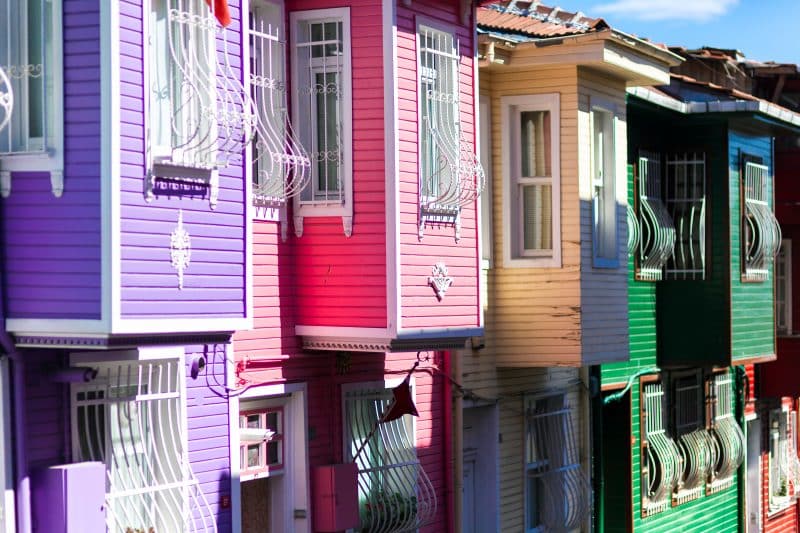5 Easy DIY Tips to Protect Exterior Wood at Home

Row Of Colourful Exterior Wood Houses
What types of wood can be treated with exterior wood paint?
Timbers are defined as hardwoods and softwoods. Softwoods derive from conifers such as firs, pines and larch. Hardwoods come from deciduous trees which are slower growing and usually denser in terms of their compactness. Around 80% of timber derives from softwoods which are lighter and used in timber buildings, cladding, fencing and sheds. Exposed to the elements they are more prone to fungal growth and require greater protection.
What's the difference between decking paint vs stain?
A stain penetrates wood deeply to highlight the grain, intensify wood tones and change appearance. Some contain preservatives such as anti-fungal agents and UV stabilisers. They generally quickly fade and require re-staining. Without regular re-staining the timber will discolour, lose strength, absorb moisture, blacken due to fungal growth, crack, warp then rot.
Unlike stain, exterior wood paint protects the timber from the elements forming a hard layer over the surface and offers protection from mechanical impact and abrasion. Exterior wood paint also provides long term weather resistance and has excellent colour and gloss retention when exposed to sunlight. Exterior wood paint like Jotun Demidekk Ultimate will protect wood up to 12 years and suppress mould and fungal growth. It can be applied over sound existing stained wood.
How do I protect exterior wood?
When applying paints the exterior wood must be in a clean, sound, dry condition below 18% moisture content. In all instances it is strongly recommended that the surface is thoroughly scrubbed with a water soluble detergent and rinsed using fresh water to remove contamination. Once dry, sand down sharp edges and remove loose fibres and dust. Should fungal growth be present the area may be treated by brush using a 5% diluted household bleach. After 15 minutes it should be rinsed thoroughly.
Existing painted surfaces should be sanded to remove lose material and feathered back to a sound edge. The surface should be cleaned as above to remove dust, oil grease and other contaminants. Before applying the paints it is important to follow the recommendations in the technical and safety data sheets. For more H&S information you may find useful information here.
Do I need a special primer for outdoor wood?
Most traditional paints will require one or two coats of primer before applying a topcoat, sufficient time must be left for drying between coats. This can delay completion of a project and increase costs and waste using multiproducts. Exterior wood paints like Jotun Demidekk Ultimate and Bradite One Can are unique in they are self priming, can be supplied from stock in thousands of colours and are applied direct to wood without the need for a primer, saving time and money.
Which type of outdoor wood paint should I use and how do I apply it?
Stir well before use and apply the outdoor wood paint longitudinally along the grain of the wood. Jotun Demidekk Ultimate is recommended for exterior wood, cladding, decking, facias, soffits and other construction timbers to reduce regular repainting or re-staining. Two coats should be applied, it is touch dry in one hour and can be overcoated within two hours saving time. An extra coat should be applied to any cut end grains of timber.
Demidekk contains mould preventing agents with water repellent properties. It protects the wood against decay, blackening and rotting, providing a long lasting decorative matt finish for 12 years. For more information follow the link to
https://avace.co.uk/product/jotun-demidekk-ultimate/
Demidekk Ultimate is available in over 2000 decking paint and exterior wood paint colours from stock. If you would like to discuss your requirements, you can speak to a member of our friendly sales team on 01384 400355 or by emailing us on sales@avace.co.uk

